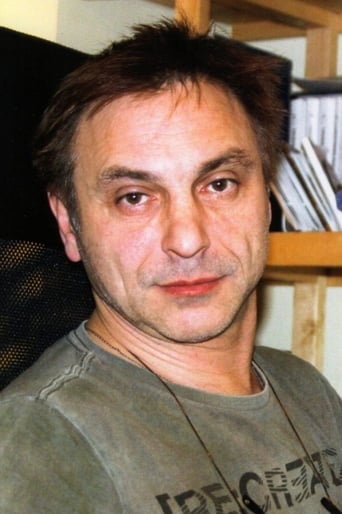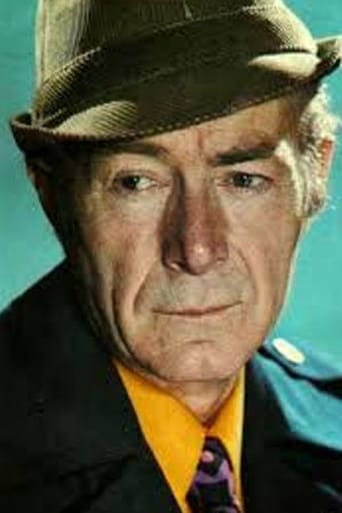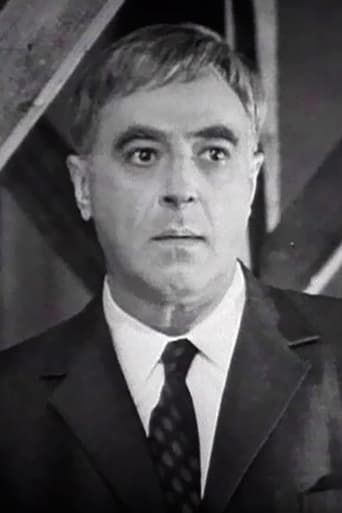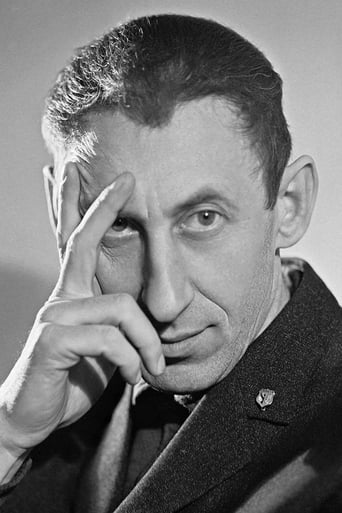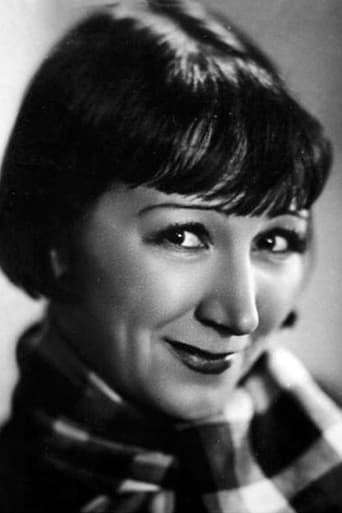Smartorhypo
Highly Overrated But Still Good
XoWizIama
Excellent adaptation.
Freeman
This film is so real. It treats its characters with so much care and sensitivity.
Logan
By the time the dramatic fireworks start popping off, each one feels earned.
Armand
One of my childhood movie. After years, it is fresh and amusing, delicate and unique. Piece from Brezhnev era, it is a window. Not to a better world or to circles of dream but to basic truth and deep feelings. The story of puppet is known. Collodi first, than Tolstoy opens same door to adventures, moral lesson, magic and wisdom. But each adaptation has its soul crumbs. In this case - joy of game, honest tale , good actors and art of director to give force to atmosphere. Buratino is more than character but shadow of each child for who world is ball of questions. Like a very old toy in hand of teenager, this film is herald of lost moments whose embers still burning.
ftud
This movie was a delight of my childhood. Of course, now,it seems to be a little old-fashioned, but I think a lot of American movies from 70s seems to be old-fashioned, too. Buratino is a very good fantasy, lots of humor, a very good music, a movie for harts, not like new-fashion fantasies with o lots of CGI but without any original idea. Soviet director, (as all authors from communist Europe) prefer fairy tales because it was hard to make movies about reality in a communist country, but in fairy tales directors were be able to do almost everything they wanted, because they said to censorship that it is just a fairy tale, nothing wrong for communism.
Andrei Pavlov
Bu! A real "boo" in this family feature is a weird cricket and a malicious talking rat (its presence is simulated by a naughty shadow).Ra! Or rather "rah"! The movie is one delicious treat for anybody who has ears to hear and eyes to see. Personally was quite enchanted by this movie in my early childhood. "Rah!" to Buratino ("A ya govor-r-r-ryu..."). "Rah!" to Karabas Barabas. "Rah!" to Kot Bazilio and Lisa Alisa. "Rah!" to Duremar. "Rah!" to everybody behind this cinema product.Ti! Tea. After watching the film it is very important to have two or three cups of tea with some candies. To ponder on life's meaning is essential.No! No disappointment during the film at all. Only crazy ecstasy ("Kva!").Russian Buratino is a firestorm. His "birth" scene is one of the best in movie industry. Buratino is making good use of wooden sticks in combat. Bang, bang and Arlekin is down on the floor. At the same time he is no evil imp, but a good fellow and a reliable friend. Then goes Buratino's voice: it is very loud, high, and disturbing, with wonderfully pronounced "r-r-r-r" sounds.What makes this movie so special is frantic music and songs. When watching some musical, there is a feeling that one or two good songs are wrapped into the rest pointless "add-ons". But here every song and every piece of music counts. The words are clever, too: "Na duraka ne nuzhen nozh..."One musical piece, when the dolls are jumping into the old chest, is simply not of this world, though quite simple.A few years ago there was a heavy metal composition "Buratino" on the "Radio of Russia" wave. This new version of the old tune sounded great, adding even more "toughness" to the perception of the original.One of the IMDb reviewers compares "Buratino" heroes to Japanese anime characters. That's err... weird, but it has a point.The highest mark for this one is all right. Thank you for attention.
Bobs-9
It seems that fairy tale films were considered by Soviet filmmakers to be an important genre, as studios devoted large budgets to them, and some directors, like Alexander Row, even specialized in them. This is a film that I happened on at a website devoted to Russian DVDs, videos and CDs. It offered generous clips of most of the films offered, and the look of this particular film really struck my fancy. Even so, when it arrived, I was unprepared for how seriously wacky it turned out to be. It's easily as strange or stranger than `The 5000 Fingers of Dr. T.'`The Adventures of Buratino and the Golden Key' was Alexander Tolstoy's re-telling of the classic story of Pinocchio, which he remembered from his childhood, but had modified and rewrote over the years. Tolstoy's version has since become a classic in its own right in Russia, and this filming of it was apparently made for Soviet TV in 1975. It's in two separate parts, each about an hour long.Buratino (i.e. Pinocchio) is played by a remarkable little actor who's kind of a funny-looking kid to begin with, and is transformed into a manic, almost frighteningly cheerful imp by the bizarre costume and makeup he wears. His high-pitched voice and shrill laughter could very well leave your ears ringing, if you have a low tolerance for it, but his performance is sharp, nuanced, and fascinating to watch. The characterizations overall are very broad and over-the-top, and there are lamentably clumsy attempts at slapstick humor by some of the adult actors. The young kids in the cast, however, are a delight to watch, as their performances are natural and apropos, and their costumes and make-up are strikingly beautiful, as are the sets and locations. Most of the younger cast portray puppets in the guise of various traditional theatre characters, (Pierrot, Harlequin, etc.). A couple of scenes almost remind me of live-action versions of Japanese anime, i.e. cute little kids in strange costumes, performing on bizarre, surreal sets.The overall look of the cinematography seems old-fashioned to me, and most of the time it's hard to guess when this was filmed. Maybe the 1940s, ‘50s, early ‘60s? But the occasional musical set pieces give its vintage away. When a character breaks into song, their voices suddenly and jarringly change into an over-reverberant, highly processed acoustic. The swinging rhythms and accompaniment clearly show signs of being from the latter half of the 20th century. Equally jarring is the old-fashioned look of the cinematography, sets and costumes in contrast to the swinging, commercial jingle-like music. Some of the wackiest elements of the film are in these musical numbers, i.e. a kick-line of frogs (kids in frog outfits) dancing atop a high arched wooden bridge, before jumping into the water one-by-one. Street-cleaners dance joyfully in what appears to be a European town of the late 1700s or early 1800s, except that they are spraying the air with pressurized water hoses as they dance.There are a few actual puppets in the film, including what appears to be a cricket playing a violin and dispensing sage advice, an element left over from the traditional Pinocchio story. The wily fox and cat who continuously try to bamboozle Buratino are played by adult actors as a shabby pair of beggars, their costumes and makeup only subtly suggesting animal characters.Unfortunately, the DVD that I got (and supposedly the VHS version as well) are in Russian only, with no subtitles. Anyone familiar with the story of Pinocchio can more-or-less follow the story, and on the web is a synopsis in English of Tolstoy's version that parallels this film almost scene-for-scene. This is a fascinating bit of foreign exotica from the Soviet era, and I'm very glad I had the opportunity to see it. I recommend it highly to anyone who enjoys bizarre and colorful imagery on film. Even if you don't understand a word of Russian (as I don't), it's not very hard to follow, and it's a treat for the eyes.
